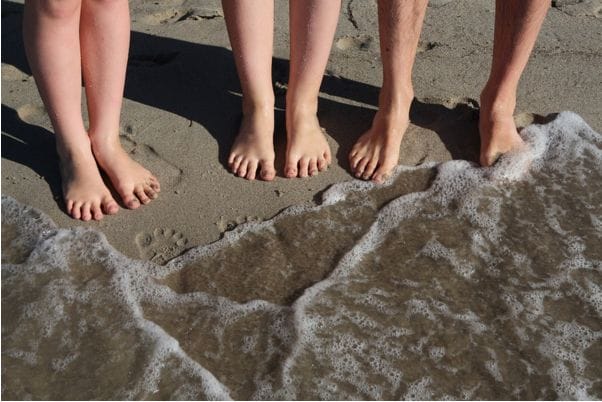Italy is a dream destination for many travelers. From its rich history and stunning art to beautiful landscapes and delicious food, this country has something for everyone. I’ve visited Italy several times and learned many useful tips along the way. Planning ahead and knowing what to expect can make your Italian adventure much more enjoyable and stress-free.
When traveling to Italy, it’s important to respect local customs and etiquette. Italians take pride in their culture and appreciate when visitors make an effort to blend in. Learning a few basic Italian phrases can go a long way in making connections with locals and enhancing your experience. I also recommend researching the best times to visit popular attractions to avoid crowds and long lines.
Key Takeaways
- Plan ahead and learn basic Italian phrases to enhance your trip
- Respect local customs and dress codes when visiting religious sites
- Try authentic regional dishes and avoid tourist traps for the best food experiences
Planning Your Trip
I recommend planning your Italy trip carefully to make the most of your visit. Here are key tips for choosing when to go, where to stay, and how to get around.
Best Season to Visit Italy
Spring and fall are ideal times to visit Italy. From April to June, you’ll enjoy mild weather and fewer crowds. September to November offers pleasant temperatures and harvest festivals.
I advise avoiding August, when many Italians vacation and some businesses close. Winter can be chilly, but it’s great for skiing in the Alps.
Summer brings hot weather and peak crowds. If you go then, book early and expect higher prices.
Accommodation Options
Italy has lodging choices for every budget. Hotels range from basic to luxurious. I suggest booking early in popular cities like Rome, Florence, and Venice.
Airbnbs offer a local experience and often more space than hotels. They’re good for longer stays or groups.
For a unique stay, try an agriturismo (farm stay) in the countryside. Hostels are budget-friendly for solo travelers.
Remember to factor in the tourist tax, a small daily fee in many cities.
Transport Essentials
Trains are a great way to travel between Italian cities. They’re fast, comfortable, and often cheaper than flying. I recommend booking in advance for the best deals.
Renting a car is useful for exploring rural areas. You’ll need an International Driving Permit. Be prepared for narrow roads and limited parking in cities.
Public transport is good in big cities. Buy tickets before boarding buses or trams.
Watch out for transportation strikes. They’re common and can disrupt travel plans.
Navigating Italian Cuisine
Italian food is famous worldwide, but eating in Italy is a unique experience. I’ll share tips on dining out, trying local drinks, and enjoying street food and sweets. These insights will help you make the most of Italy’s incredible culinary scene.
Dining Experiences
When I eat at Italian restaurants, I always keep a few things in mind. Many places charge a coperto, a small cover charge for bread and table settings. It’s normal and usually listed on the menu.
I often start with an insalata verde (green salad) before moving on to pasta or pizza. Remember, pasta is typically a first course, not the main dish.
For the best dining experiences, I avoid tourist traps near major attractions. Instead, I look for places filled with locals. Don’t be afraid to ask for recommendations – Italians are usually happy to share their favorite spots.
Local Beverages
Italian coffee culture is an art form. I never order a cappuccino after 11 AM – it’s considered a breakfast drink. For a quick caffeine boost, I go for an espresso at the bar.
When it comes to wine, I often order the vino della casa (house wine). It’s usually good quality and affordable. Each region has its own specialties, so I try to sample local varieties.
Tap water is generally safe to drink in Italy. If I want still water at a restaurant, I ask for “acqua naturale”. For sparkling, I request “acqua frizzante”.
Street Food & Desserts
Street food in Italy is delicious and budget-friendly. I love grabbing a slice of pizza al taglio (pizza by the slice) for a quick lunch. It’s often sold by weight and reheated on the spot.
For dessert, gelato is a must-try. I look for shops that say “gelato artigianale” – this means it’s made in-house with natural ingredients. Flavors like pistachio, stracciatella, and fior di latte are classics I always enjoy.
In the morning, I join locals at a bar for a quick breakfast of cornetto (Italian croissant) and espresso. It’s a great way to start the day and experience authentic Italian food culture.
Sightseeing and Attractions
Italy is packed with amazing sights and attractions. From ancient ruins to stunning coastlines, there’s something for everyone. I’ve explored many of these places and can share some tips to make your visit unforgettable.
Famous Landmarks
Rome is home to some of Italy’s most iconic landmarks. I recommend visiting the Colosseum, which is awe-inspiring in person. To avoid long lines, I always buy skip-the-line tickets in advance.
The Vatican Museums and Sistine Chapel are must-sees. I suggest going early in the morning to beat the crowds. In Florence, don’t miss Michelangelo’s David at the Accademia Gallery.
Venice’s St. Mark’s Basilica and Doge’s Palace are stunning. I love taking a gondola ride through the canals for a unique view of the city.
In Pisa, the Leaning Tower is worth a visit. I find it’s less crowded in the evening.
Natural Wonders
The Cinque Terre coastline is breathtaking. I enjoy hiking between the five colorful villages and taking in the sea views.
Lake Como is another natural gem. I love taking a boat tour to see the beautiful villas and mountains.
The Amalfi Coast offers stunning cliffside views. I recommend visiting Positano and taking a drive along the winding coastal road.
In Sicily, Mount Etna is Europe’s largest active volcano. I find the guided tours fascinating and the views from the top incredible.
Cultural Insights
Italy’s UNESCO World Heritage sites offer deep cultural insights. In Tuscany, I love exploring the historic centers of Florence and Siena.
Bologna’s porticoes are unique architectural features. I enjoy walking under these covered walkways and admiring the city’s medieval charm.
Naples is the birthplace of pizza. I always make time for a traditional Neapolitan pizza at a local pizzeria.
In Venice, I find the Carnival masks fascinating. Visiting a mask-making workshop gives me a glimpse into this centuries-old tradition.
Shopping and Fashion
Italy is famous for its high-quality goods and stylish clothes. When you visit, you’ll find great shopping and fashion tips to help you look your best.
Italian Brands and Outlets
I recommend checking out some of Italy’s top fashion brands. Milan is Italy’s fashion capital with many designer shops. Some popular Italian brands include:
- Gucci
- Prada
- Versace
- Armani
For better deals, I suggest visiting outlet malls. The Mall near Florence has discounted luxury items. Serravalle Designer Outlet near Milan is another good choice.
Smaller towns often have local artisans selling handmade goods. I love browsing these shops for unique souvenirs like leather goods or ceramics.
What to Wear in Italy
Italians dress well, so I try to look stylish when visiting. Here are some tips:
- Pack nice, fitted clothes in neutral colors
- Bring a few dressier outfits for dinners out
- Avoid shorts and flip-flops in cities
Comfortable shoes are a must for walking on cobblestone streets. I like to bring stylish sneakers or low heels.
For churches, I make sure to cover my shoulders and knees. A light scarf is handy to cover up when needed.
The weather varies by region and season. I always check the forecast and pack layers I can mix and match.
Practical Tips and Etiquette
When visiting Italy, it’s important to understand local customs and communication. These tips will help you navigate Italian culture and interact respectfully with locals.
Communicating with Locals
I recommend learning some basic Italian phrases before your trip. Here are a few essentials:
- “Ciao” (hello/goodbye)
- “Grazie” (thank you)
- “Per favore” (please)
- “Scusi” (excuse me)
Italians appreciate when tourists try to speak their language. Even if you make mistakes, they’ll often be patient and helpful.
When ordering coffee, remember that “latte” just means milk. If you want coffee with milk, ask for a “caffè latte.”
In bars and cafes, I’ve found it’s common to pay first at the counter, then give your receipt to the barista.
Understanding Local Customs
Italians take their food seriously. I’ve learned not to ask for spaghetti bolognese – it’s not a real Italian dish! Instead, try authentic local specialties.
Meal times in Italy are typically later than in some countries:
- Lunch: 1:00 PM – 3:00 PM
- Dinner: 8:00 PM – 10:00 PM
When dining out, it’s polite to keep your hands visible on the table, not in your lap.
I’ve noticed that tap water isn’t always served in restaurants. If you want it, ask for “acqua del rubinetto.” Alternatively, you can fill up your water bottle at public fountains, which are safe to drink from in most cities.
Frequently Asked Questions
Planning a trip to Italy involves many important details. I’ll cover key information about packing, etiquette, entry requirements, safety, transportation, and dining to help you prepare.
What are the essential items to pack for a trip to Italy?
I recommend packing comfortable walking shoes, as Italy’s cities have many cobblestone streets. A universal power adapter is crucial for charging devices. I also suggest bringing a light jacket or sweater for cool evenings, even in summer.
Sunscreen and sunglasses are must-haves, especially if visiting coastal areas. A refillable water bottle can save money and keep you hydrated while sightseeing.
What cultural etiquette should I be aware of when visiting Italy?
Italians appreciate greetings, so I always say “buongiorno” (good day) or “buonasera” (good evening) when entering shops or restaurants. Dress modestly when visiting churches – cover shoulders and knees.
Tipping isn’t required in Italy, as service charges are often included. But leaving a small tip for exceptional service is appreciated. I avoid eating while walking, as Italians typically sit down for meals.
What are the current entry requirements for travelers to Italy?
As of October 2024, U.S. citizens can enter Italy for up to 90 days without a visa for tourism. I always check the official Italian Ministry of Foreign Affairs website for the most up-to-date entry requirements.
A valid passport with at least six months remaining before expiration is needed. I keep a copy of my passport and important documents in case of loss.
How can I ensure my safety while traveling in Italy?
Italy is generally safe, but I stay alert in crowded tourist areas. I keep valuables secure and use a money belt for important documents. I avoid flashing expensive jewelry or electronics.
I stay aware of my surroundings, especially at night. Using official taxis or ride-sharing apps is safer than accepting rides from strangers.
What are the best transportation options for getting around in Italy?
Trains are an excellent way to travel between Italian cities. I find the high-speed trains comfortable and efficient. In cities, public buses and metros are convenient options.
For exploring rural areas, renting a car can be helpful. I always familiarize myself with Italian driving laws before getting behind the wheel.
What should I know about dining and food etiquette in Italy?
Italians typically eat dinner later, around 8 or 9 PM. I avoid asking for substitutions in restaurants, as Italians take pride in traditional recipes.
Cappuccino is considered a breakfast drink. After 11 AM, I order an espresso if I want coffee. When dining out, I wait for everyone to be served before starting to eat.




